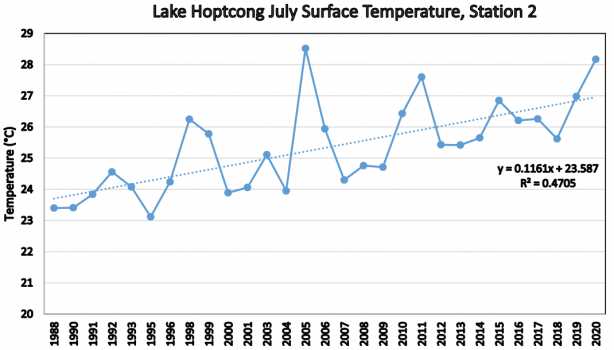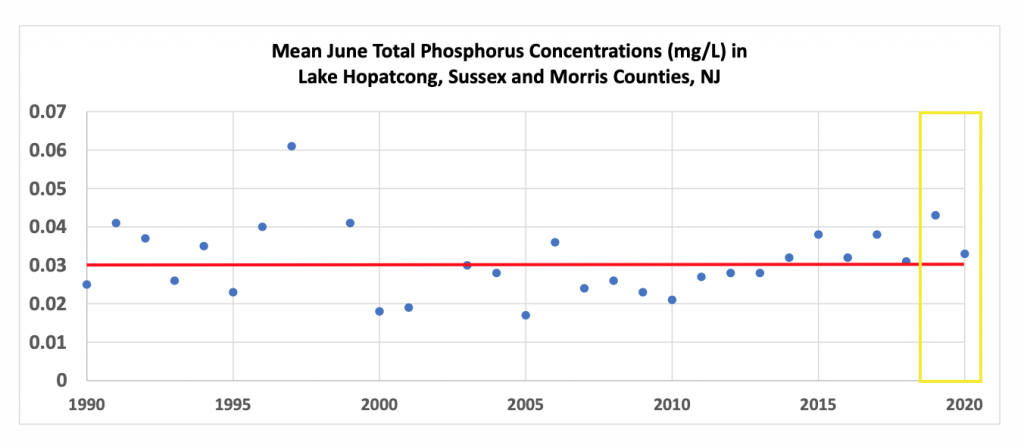Each year the Lake Hopatcong Commission contracts Princeton Hydro to monitor water quality on Lake Hopatcong. At the end of the season the data is analyzed and compared to over thirty years of historical water quality data to monitor trends in parameters such as temperature, dissolved oxygen, and phosphorus. During the Commission's January 11, 2021 meeting Dr. Fred Lubnow of Princeton Hydro presented the 2020 water quality data.
Dr. Fred Lubnow, Princeton Hydro’s Director of Aquatics Programs presents 2020 Water Quality Data at the LHC January meeting.
Summary of Findings
Although HAB conditions improved in 2020, Dr. Lubnow notes that there were still high concentrations of chlorophyll-a at the mid-lake (deep water) station despite low phosphorus conditions. Chlorophyll-a is produced by all algal groups during photosynthesis and is an indicator of general algae concentrations in a waterbody. High chlorophyll-a concentrations at the mid-lake station tell us that algae is being produced in either near-shore areas and floating to mid-lake or originating deep in the water column and floating to the surface. In 2020, the Lake Hopatcong Commission in partnership with the Lake Hopatcong Foundation was awarded a 319 -grant through NJDEP that will provide additional funds for water quality monitoring and help determine how deep water contributes to HABs in Lake Hopatcong.

July surface water temperature data collected at the mid-lake station indicates a statistically significant increase in water temperature through time. Each year Princeton Hydro monitors dissolved oxygen and water temperature, two factors important for maintaining brown trout habitat. Frequently Lake Hopatcong experiences a loss of optimal habitat during the summer months, however this was the first year that we also saw a loss of carryover habitat. This loss of habitat occurred in July and was re-established in August. Dr. Lubnow suggests that this is one of the impacts of climate change waterbodies can expect as we experience rising temperatures.

The figure above shows long-term, mean June total phosphorus (TP) data for Lake Hopatcong. June 2019 samples were collected by Princeton Hydro about a week before the harmful algal bloom (HAB) was identified and it was the first time in almost 20 years that it exceeded 0.04mg/L. In June 2020 TP values were lower at 0.033mg/L and Princeton Hydro attributes less HABs in early summer 2020 with lower phosphorus concentrations.
Each season Princeton Hydro also calculates the amount of phosphorus removed through weed harvesting. A total of 35 cubic yards of material was harvested in 2020, which equates to about six pounds of phosphorous. This is considerably less than prior years when weed harvesting was conducted all summer. In a normal year the Commission could expect to remove about 200 pounds of phosphorus. Lubnow concludes that this illustrates the value of weed harvesting not only to open waterways for recreational use and control invasive species, but it also helps to remove phosphorus from the water column.
To view the entire 2020 Water Quality Report CLICK HERE

